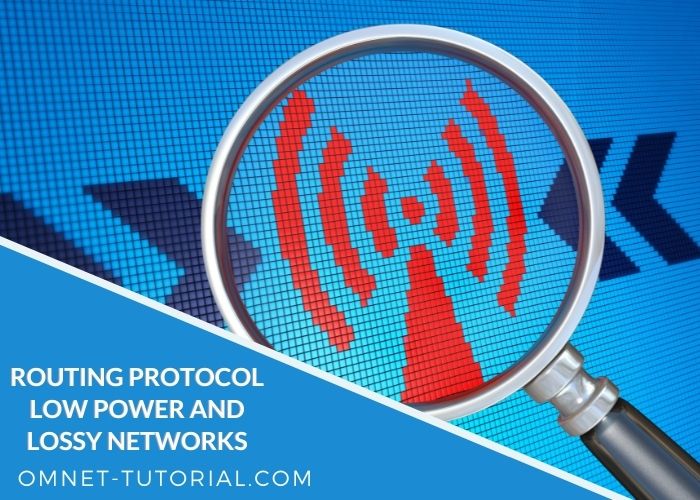Routing Protocol Low Power and Lossy Networks (RPL) is a proactive protocol that commits to distance vector for route information management. Our RPL Protocol Paper Publication Guidance offers publishing opportunities in RPL protocol-based network architecture, network performance evaluation, and protocol design towards great simulation results in experimentation.
Before Choosing RPL Topics, we need to be familiar with some RPL essentials and Key concepts which act as the soul of this Routing Protocol. This article will make you clear on these dynamics and give current research trends in RPL.
What is RPL Routing Protocol Low Power and Lossy Networks?
In general, RPL uses a hierarchical structure routing topology as Destination-Oriented Directed Acyclic Graph (DODAG). And, it is rooted towards one or more nodes as a root node or sink node. In addition, here we have added a few important merits of the RPL Protocol.
Advantages of RPL Protocol
- The main objective of the RPL protocol Low Power and Lossy Networks is to target collection-based networks. Here, the nodes selectively submit measurements to a collection point.
- It is intended to be extremely adaptive in all forms of network conditions with provision to provide alternative routes, in the time of default routes unreachability
- Moreover, it offers a scheme to broadcast the information in dynamic network topology
Key Features in RPL Routing Protocol Low Power and Lossy Networks
- Hop Count and ETX cooperatively describe the RPL objective function. And, it is computed utilizing the following aspects,
- Packet Delivery Ratio
- Power Consumption
- Control Traffic Overhead
- Network Latency
- Supports WiFi, LoRA, 802.15.4, and other RPL enabled Contiki os
- Life expectancy for real-time application deployments is limited and varies because of the following cases,
- Recurrent Topology Alterations
- Environmental Parameters Consequence
- Network Uncertainties by varying power transmission of sensor motes etc.
- The link-layer approach of RPL constructs the topology in a tree-like data structure.
- RPL has default add-on features as minimum data rate and communication with maximum throughput
- In many cases, RPL enabled IoT devices to have critical issues of Security
Research Areas in RPL Protocol
In recent days, RPL is highly notable for its growing size, scope, and heterogeneity in the research world. The promise of a single end-to-end technology is yet not valued and is not likely to happen in the future. And, some of the research areas are described in the following,
- Wireless Sensor Networks
- Smart Grid Communication
- RPL-CoAP Protocol
- Internet of Connected Vehicles
As a matter of fact, our platform offers you all sorts of research services in your study. To make it simpler for you, we have distinct teams of experts for research, development, manuscript writing, and publication.
Particularly, now we are going to discuss research papers and publication activities in RPL Routing Protocol Low Power and Lossy Networks. With the backing of the global research committee, we are constantly publishing premium quality research papers so you can approach your RPL protocol paper publication guidance. Here, we have given some common steps in Paper Publication.
How to publish a research paper?
- Check the guiding principle of your aimed journal and read articles that similar to your study
- Order your findings concerning journal requests, design figures, and tables
- Write the results section with the proper order of figures and tables
- Revise your draft and follow added inputs from experts
In our assistance, the foremost step in the paper publication is Journal Selection which offers valuable credit in research work. So, we give in-depth guidance in it in terms of aim, scope, impact factor, acceptance rate, and review time.
High Impact Journals for RPL Routing Protocol Low Power and Lossy Networks
- International Journal of Network Management
- Aims & Scope
- Security and QoS with reliably operating large-scale systems
- Impact Factor – 0.64
- Review time – 12 Week(s)
- Aims & Scope
- ETRI Journal
- Aims & Scope
- Security and Privacy
- High-performance Computing
- Wireless Networks Routing Protocols
- Communication Services and Networks
- Impact Factor – 1.116
- Review Time – 4.4 month(s)
- Aims & Scope
- Computer Networks
- Aims & Scope
- IoT Communications and Protocols
- Sensing and Transmission
- Wireless Technologies
- Impact Factor – 3.111
- Aims & Scope
- Networks and Heterogeneous Media
- Aims & Scope
- Management of Network
- Internet of Things
- Quality of Service Provisioning
- Impact Factor – 0.871
- Aims & Scope
Our experts of the resource team have extensive experience in handling the RPL research area. From that acquaintance, we weighed the main technical dimensions that reviewers looking for faster paper acceptances. To increase the RPL paper quality, we should be aware of addressing the following guidelines before journal submission.
Paper Writing and Publication Guidelines in RPL Protocol
- Scalable Deployed Scenarios
- Steps for Network Configuration
- Parent Selection in RPL Protocol
- RPL Protocol Process and Topology
- Measured RPL Protocol Metrics
- RPL Protocol Control Messages and Objective Function
- Experimental Materials in RPL Protocol
- Previous RPL Implementations
For your benefit, we extend our service in the paper revision phase also. Most of our papers fall under either direct acceptance of the minor revision. For the best results of RPL Routing Protocol Low Power and Lossy Networks Paper Publication Guidance, our experts framed some attributes that upgrade your paper from others.
Key Features in Journal Paper Writing
- Research Novelty
- Deep Mathematical Logic
- Algorithms Parameters
- The core idea of Protocol
- Numerical Analysis and Methods
- Theorems and Proofs
- Scenarios and Latest Development
Further, if you want to know more details about RPL Routing Protocol Low Power and Lossy Networks research, then you can contact us. Our technical professionals will give the best phase-by-phase guidance in your stipulated time.


